Redesigning the Bagel
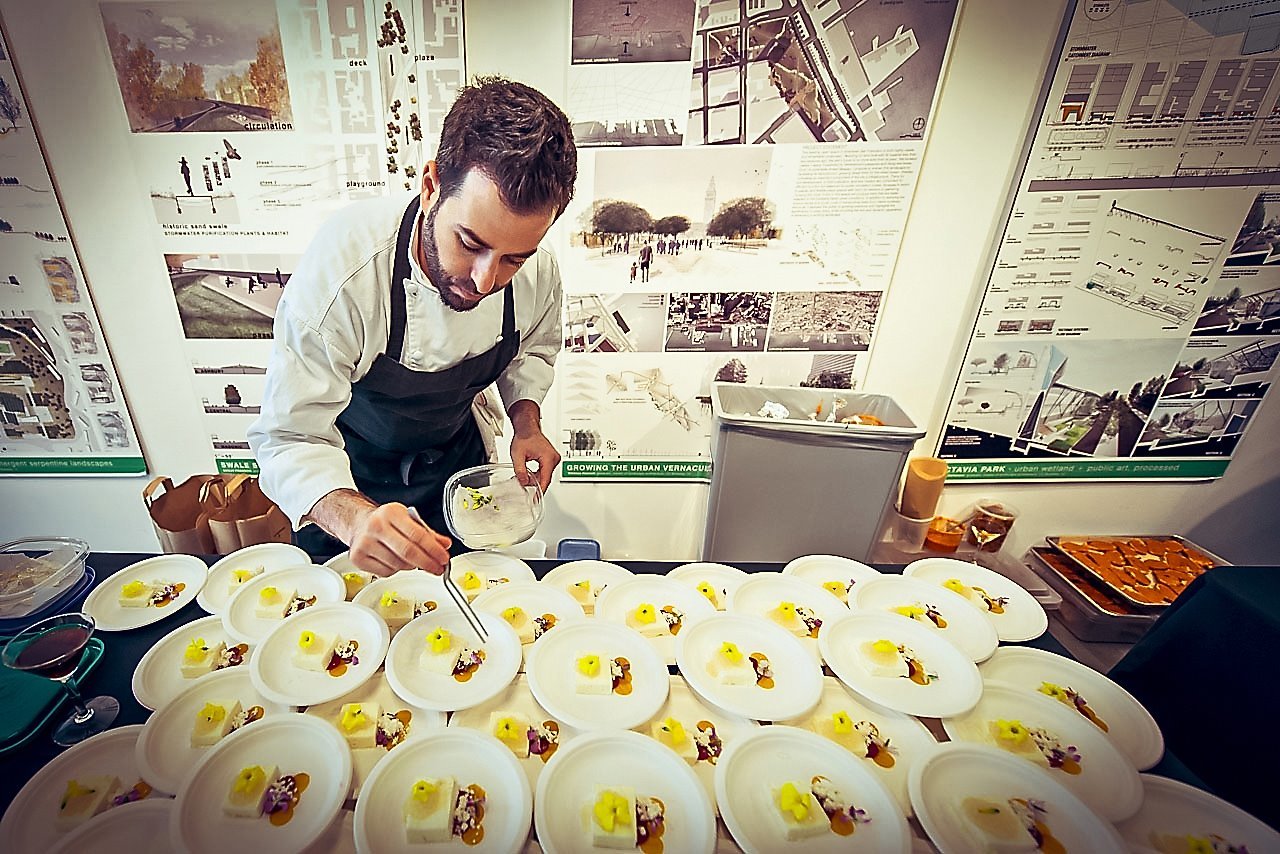
Hi, I'm Danny, the culinary resident in IDEO San Francisco's Food Studio. I've been cooking professionally for many years, and now that I'm here, I've discovered that designers and chefs have a lot in common. We both sketch out initial ideas and then iterate quickly until the product is tasty and ready to consume.
Here's an example: When I was working as a chef in fine dining, I set out to reinvent a classic—my all-time fave—the bagel, lox, and cream cheese sandwich.
My former boss, Chef Joan Roca, once told me that his most prized dining experience was when he ate the best version of a beloved dish:
"For me, there is nothing like eating the best bowl of spaghetti Bolognese I've ever tried—I don't care if you've come up with the most revolutionary dish made from watermelon and chicken feet, it just doesn't resonate in my memory banks like the familiar flavors of Bolognese do."
The process of reinvention or "deconstruction" is fairly common practice in the modern kitchen. Once you've deconstructed something, it unlocks myriad ideas. Here's what design thinking looks like in the kitchen, as expressed through a new version of the classic breakfast sandwich.
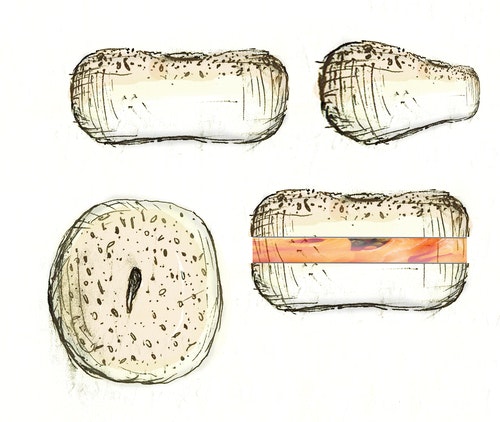
1. DEFINE THE DESIGN CHALLENGE: REINVENTING THE BAGEL SANDWICH
Bagel, lox, and cream cheese immediately transports me to the kitchen table at my Nana's house on a Saturday morning. The flavors are classic, yet sophisticated; a perfect dish to deconstruct for a modern appetizer.
To help you play along, here's a brief definition of deconstruction in the chef's world. The concept, which was made famous by catalan chef Ferran Adria, is to reimagine the elements of an established dish in order to create something new. I love deconstruction because it allows me play with one of my favorite elements of cooking and eating—memory.
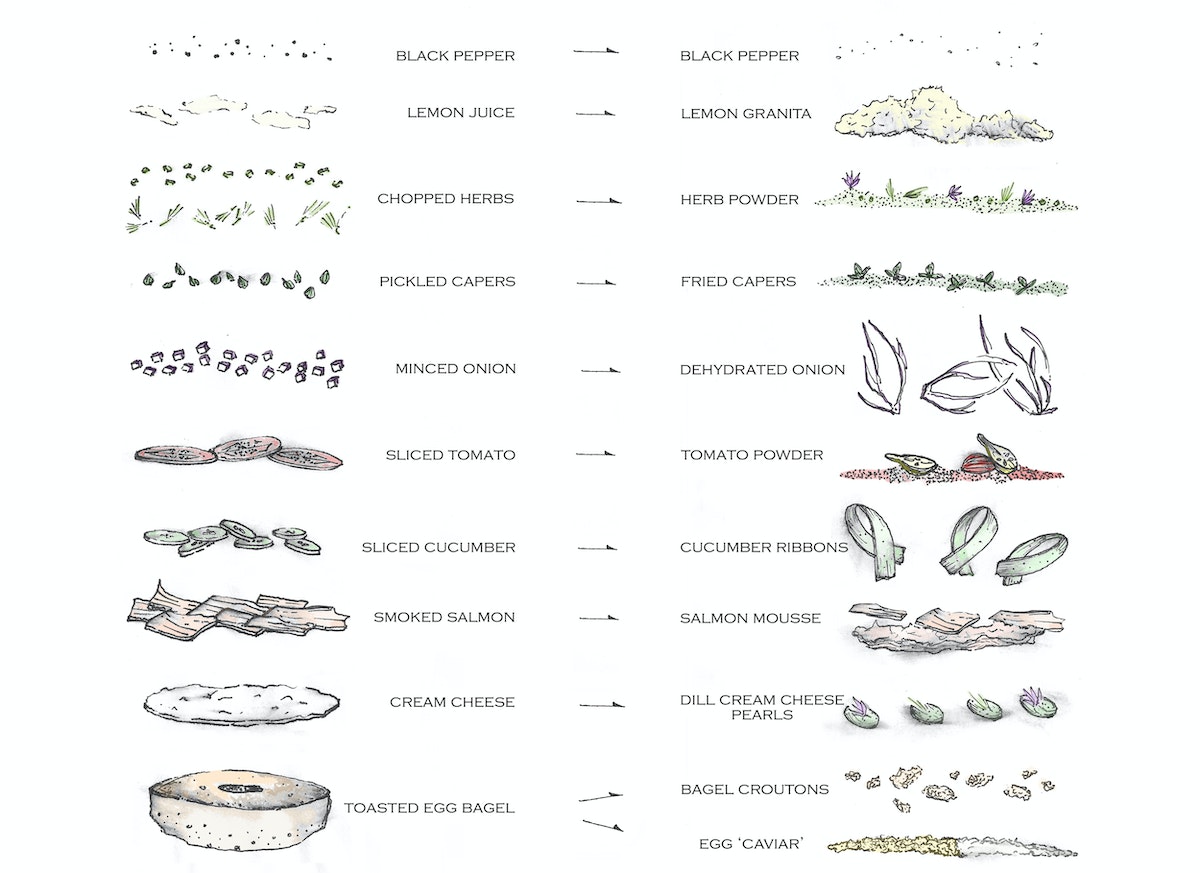
2. DESIGN RESEARCH
The next step in recreating the bagel, lox, and cream cheese sandwich was to look into the origins and variations of the dish. I wasn't surprised to learn that the word "Lox" stems from the Yiddish word for salmon, “laks”. (There are Scandinavian roots, too, where fishermen preserved salmon in saltwater brine).
What I didn't know was that in 1869, the transcontinental railroad began transporting barrels of salted salmon—giving rise to its popularity in New York City, especially among the Eastern European Jewish immigrants who came over to the U.S. with a taste for cured and smoked fish.
As for the remaining ingredients: Bagels were first seen on the silk route in China, and then refined in Italy in the 14th century. My polish grandfather told me he used to buy "hard bagels with a huge hole" as a child in Radom, Poland. Capers came from Italy, cream cheese has roots in Britain, and tomatoes came from the new world.
So, none of the key ingredients to the sandwich come from New York City, but it was New Yorkers who put them together. The fact that the combo wasn't "old country" made me more relaxed about reinventing it—at least I knew that my version wasn't bastardizing some 1000-year-old dish, the dish itself had always been a food bastard.
I realized that in order to successfully transport myself back to my grandmother's kitchen table, I had to leave the core elements in their original, unadulterated form somewhere in the dish.
I looked at more than 50 restaurant versions and cookbook recipes for bagels, lox, and cream cheese. Then, I extracted all of the possible elements and techniques that went into the sandwich.
The ingredients included: lemon, lime, chili pepper, black ground pepper, white pepper, cayenne pepper, red onions, white onions, radish, avocado, cucumber, butter, cream cheese, capers, caperberries, olives, pickled scallions, hard boiled egg, chives, dill, tomato. I looked at the whole spectrum of preparations that were applied to each ingredient on my list: fried, scrambled, or hard-boiled eggs; raw, baked, or smoked salmon; pickled or marinated vegetables. There was an almost endless variety of combinations!
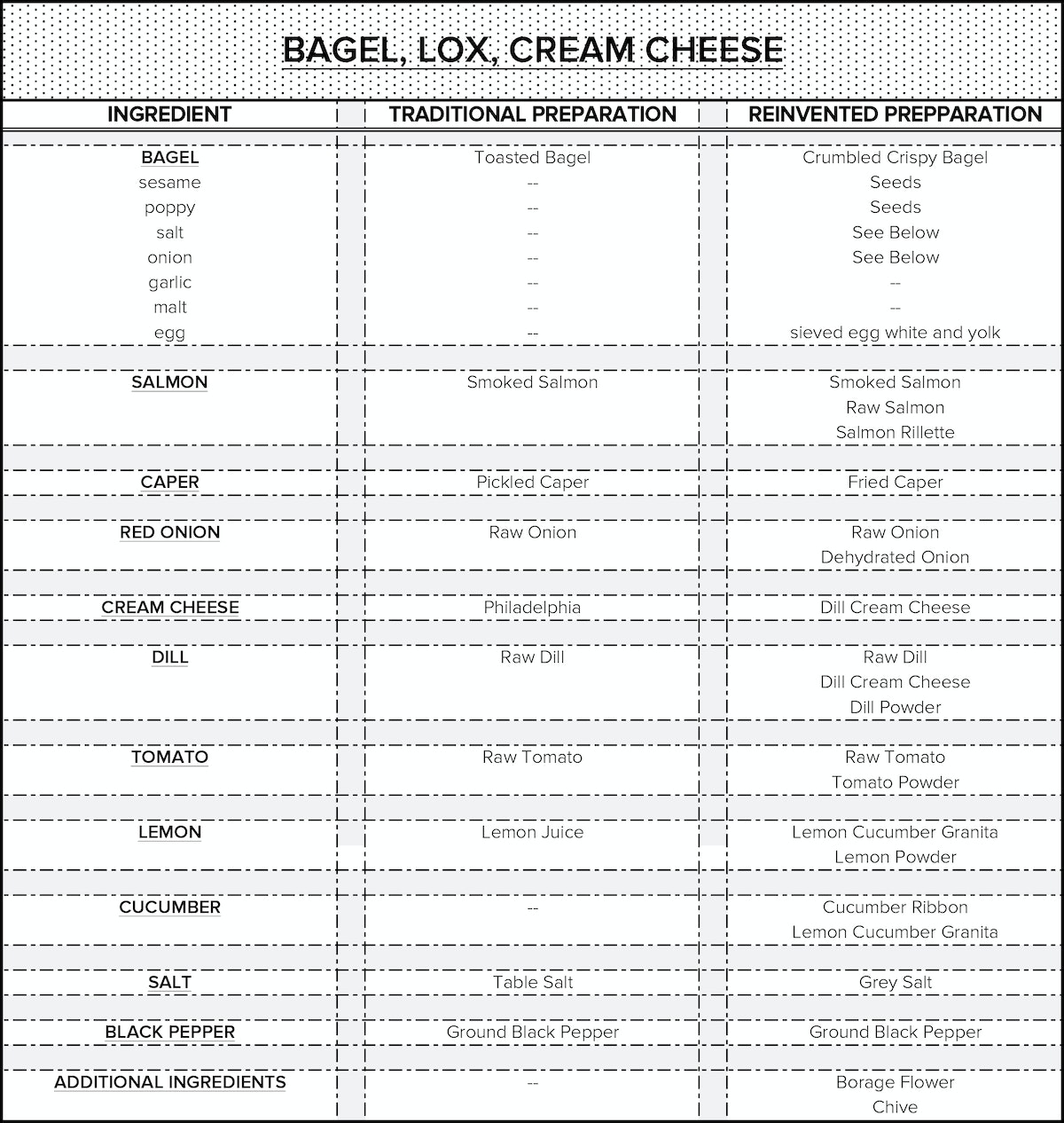
3. SYNTHESIS
I created a spreadsheet with the list of ingredients and techniques I'd compiled in my research. The lefthand column listed each possible ingredient; the middle column listed the traditional preparations for each ingredient; and the righthand column listed the options for modern techniques that could be applied in place of the traditional ones.
4. ITERATION (AND FAILURE)
I began to deconstruct the dish ingredient by ingredient, deciding if and how I was going to affect each preparation and presentation. Sometimes I chose dramatic changes like converting drops of lemon juice into an icy lemon granita or transforming smoked salmon into an aerated mousse shot from and ISI foamer. But I also used more common techniques: an alternative cut on a cucumber, dehydration of fresh onions to make chips and powder; crumbled and sautéed bagel in olive oil. Some ingredients were left untouched like the black pepper or some were simply substituted like using marinated cherry tomatoes instead of sliced tomatoes.
I prototyped 10 to 12 iterations of each ingredient before settling on a final version. Conceiving a modern version of the dish that triggered my childhood memory was a bigger challenge than I had imagined. The first 4 to 5 prototypes sacrificed flavor for fancy techniques. One of the versions I came up with was just a bunch of powders—terrible!
Finally, I realized that in order to successfully transport myself back to my grandmother's formica kitchen table, I had to leave the core elements—bagel, lox, and cream cheese—in their original, unadulterated form somewhere in the dish.
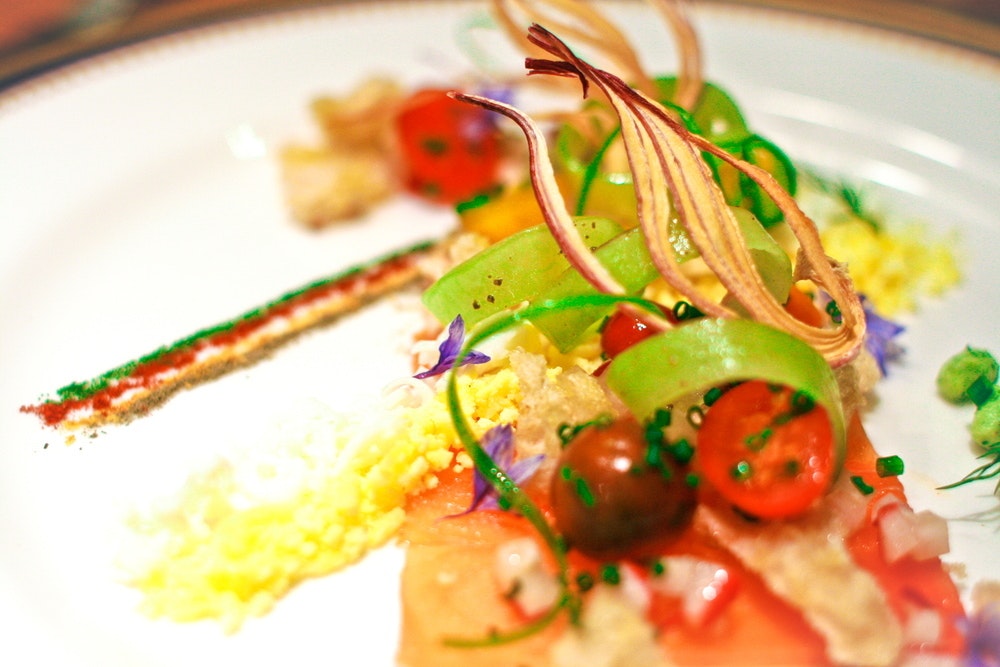
5. IMPLEMENTATION
My final version of the dish was a fluid mix of old and new: the presentation and techniques of the dish placed it strongly in the modern kitchen while the flavors remained old-world.
The final version included smoked salmon, toasted bagel, cherry tomato, fresh dill and Philadelphia cream cheese. It also featured smoked salmon rillettes; sieved egg whites and yolks; a Meyer lemon granita; dehydrated purple onions; powdered chives, powdered tomato, and powdered lemon zest (some of the powders made the final cut!); sweet, fried capers; cucumber ribbons, pickled shallots and nitro-dill cream cheese (cream cheese of the future).
When I sat down to enjoy the dish, I could almost hear my Polish Nana telling me, "Ess, mein shayna yingele, ess." (Eat, my beautiful child, eat.) And so I did.
Words and art

Subscribe

.svg)







